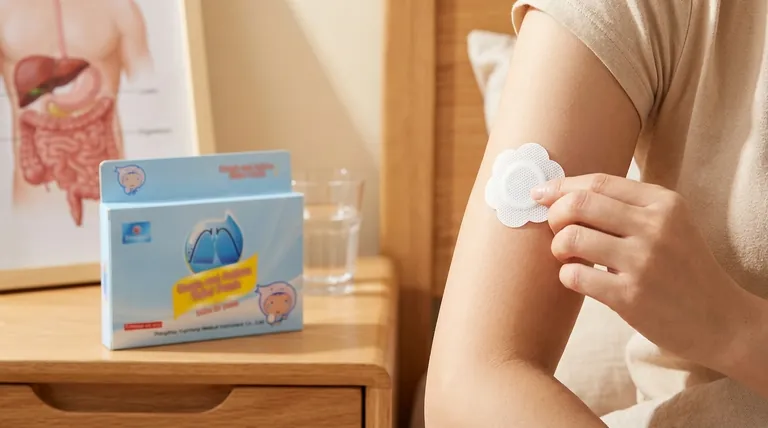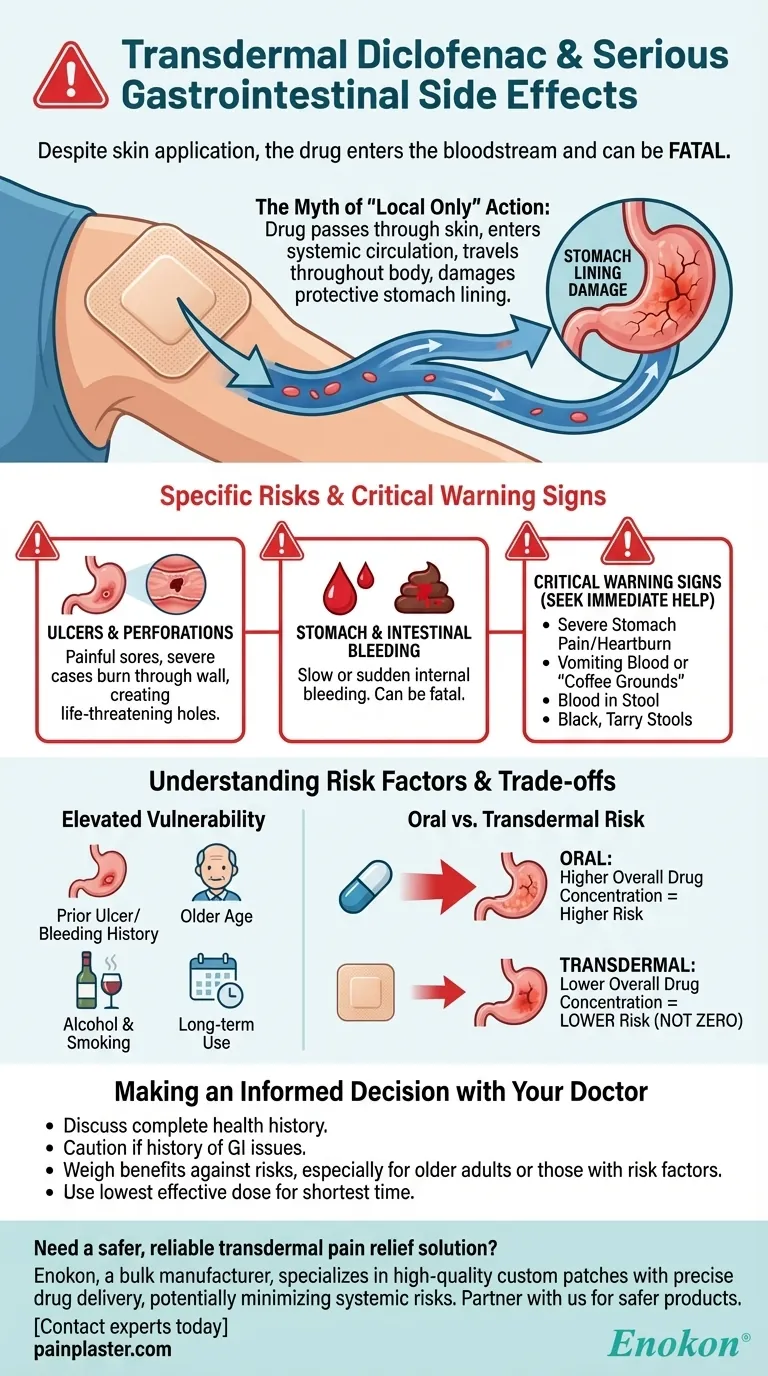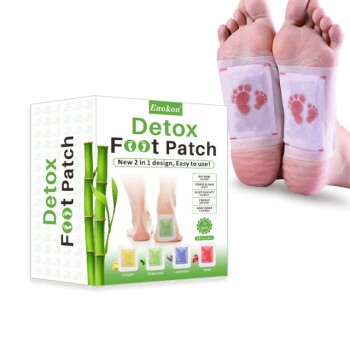Yes, transdermal diclofenac can cause serious gastrointestinal side effects. Despite being applied to the skin, the drug is absorbed into the bloodstream and can lead to swelling, ulcers, bleeding, or even perforations (holes) in the stomach and intestines. These complications can develop without warning at any time during treatment and have the potential to be fatal.
The core issue to understand is that while applying diclofenac to the skin reduces overall exposure compared to taking a pill, it does not eliminate the risk. A portion of the drug still enters your bloodstream and circulates throughout your body, where it can damage the protective lining of your stomach.

How a Skin Patch Can Affect Your Stomach
Many assume that a topical medication only works where it is applied. With transdermal NSAIDs like diclofenac, this is a dangerous misconception that can lead to underestimating the risks.
The Myth of "Local Only" Action
While the highest concentration of the drug is at the application site, a significant amount is designed to pass through the skin and enter the systemic circulation. This is what makes it an effective pain reliever for deeper tissues.
Systemic Absorption Explained
Once diclofenac enters your bloodstream, it behaves just like an oral NSAID. It travels throughout your body, not just to the site of your pain.
Impact on Stomach Lining Protection
NSAIDs work by blocking enzymes called cyclooxygenase (COX). While this reduces pain and inflammation, it also inhibits the protective functions of these enzymes in the stomach, weakening the lining and making it vulnerable to damage from stomach acid.
Specific Gastrointestinal Risks and Symptoms
It is critical to recognize the warning signs of a serious gastrointestinal event. Do not dismiss these symptoms, as they can indicate a medical emergency.
Ulcers and Perforations
Diclofenac can cause the formation of painful sores, or ulcers, in the lining of the stomach or intestine. In severe cases, these can burn completely through the wall, creating a perforation (hole), which is a life-threatening condition.
Stomach and Intestinal Bleeding
The damage to the stomach lining can also lead to internal bleeding. This can be a slow, chronic process or a sudden, severe hemorrhage.
Critical Warning Signs
Seek immediate medical attention if you experience any of the following:
- Stomach pain or severe heartburn
- Vomiting blood or a substance that looks like coffee grounds
- Blood in the stool
- Black, tarry stools
Understanding the Trade-offs and Risk Factors
The risk of these serious GI side effects is not the same for everyone. Certain factors dramatically increase your vulnerability.
Prior Medical History
Your risk is significantly higher if you have a history of ulcers or stomach bleeding. People with bleeding disorders or liver disease are also at greater risk.
Duration of Use and Age
The longer you use transdermal diclofenac, the higher your risk becomes. Older adults are generally more susceptible to these complications.
Lifestyle Choices
Regularly drinking alcohol or smoking while using diclofenac further weakens the stomach's defenses and increases the likelihood of developing ulcers or bleeding.
Oral vs. Transdermal: The Real Difference
The primary advantage of the transdermal patch is that it results in lower overall drug concentrations in the blood compared to oral pills. This generally translates to a lower risk of systemic side effects, including GI issues. However, it is crucial to remember that lower risk is not zero risk.
Making an Informed Decision With Your Doctor
Understanding your personal risk profile is key to using this medication safely. Discuss your complete health history with your healthcare provider to determine if transdermal diclofenac is the right choice for you.
- If you have a history of ulcers or stomach bleeding: You should approach any NSAID, including transdermal diclofenac, with extreme caution and explore alternative pain management strategies with your doctor.
- If you are an older adult or have multiple risk factors (e.g., smoking, alcohol use): The potential for serious side effects is elevated, and the benefits must be carefully weighed against these known dangers.
- If you are a healthy individual with no GI history seeking short-term relief: The risk is generally lower, but you must still remain vigilant for any warning signs and use the lowest effective dose for the shortest possible time.
Ultimately, this is a powerful medication that requires a clear understanding of its potential to cause harm, even when applied to the skin.
Summary Table:
| Potential GI Side Effect | Key Symptoms to Watch For |
|---|---|
| Ulcers & Perforations | Severe stomach pain, vomiting, abdominal tenderness |
| Stomach & Intestinal Bleeding | Vomiting blood, black/tarry stools, blood in stool |
| General GI Irritation | Heartburn, nausea, stomach discomfort |
Need a safer, reliable transdermal pain relief solution?
As Enokon, a bulk manufacturer of high-quality transdermal patches, we understand the critical balance between efficacy and safety. Our technical expertise ensures precise drug delivery systems, potentially minimizing systemic risks for end-users.
We partner with healthcare and pharma distributors and brands to develop custom patches with rigorous R&D. Let's collaborate to create a safer product for your customers.
Contact our experts today to discuss your custom transdermal development needs.
Visual Guide

Related Products
- Asthma Cough and Pain Relief Patch for Adults and Kids
- Far Infrared Deep Heat Relief Patches Medicated Pain Relief Patches
- Mugwort Wormwood Pain Relief Patch for Neck Pain
- Menthol Gel Pain Relief Patch
- Icy Hot Menthol Medicine Pain Relief Patch
People Also Ask
- How does the cough relief patch provide targeted relief? Direct, Soothing Comfort for Coughs & Chest Congestion
- How does the far infrared technology in the cough relief patch work? Enhance Natural Ingredient Delivery
- How does capsaicin work in the Reliever Patch? A Drug-Free Solution for Targeted Pain Relief
- Can pregnant women use pain relief patches? Your Essential Guide to Safe Pain Management
- What makes the cough relief patch a convenient option for managing coughs? A Mess-Free, On-the-Go Solution

















